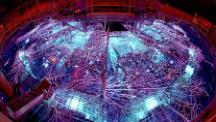X-ray heating and radiation cooling of laboratory photoionized plasmas
Monday 20 May 2019, 1.00PM to 14:00
Speaker(s): Roberto Mancini, University of Nevada

In separate experiments performed at the Z facility of Sandia National Laboratories two different samples were employed to produce and characterize photoionized plasmas. One was a gas cell filled with neon, and the other was a thin silicon-oxygen layer tamped with plastic. Both samples were driven by the broadband, intense X-ray flux produced at the collapse of a wire array z-pinch implosion. Transmission spectroscopy of a narrowband portion of the x-ray flux was used to diagnose the plasma. A method was used to extract the electron temperature that is independent of atomic kinetics modeling. To interpret this measurement, we performed Boltzmann electron kinetics and radiation hydrodynamics modeling. The simulations emphasized the critical interplay between atomic physics and plasma heating, and demonstrated the dramatic impact of photoexcitation on excited state populations, line emissivity, and radiation cooling. Calculations performed with astrophysical codes significantly overestimated the electron temperature. This work was sponsored in part by DOE HEDLP Grant DE-NA0003875, DOE OFES Grant DE-SC0014451, the Wootton Center for Astrophysical Plasma Properties, and the Z Facility Fundamental Science Program of SNL.
Location: Debye Lecture Theatre
